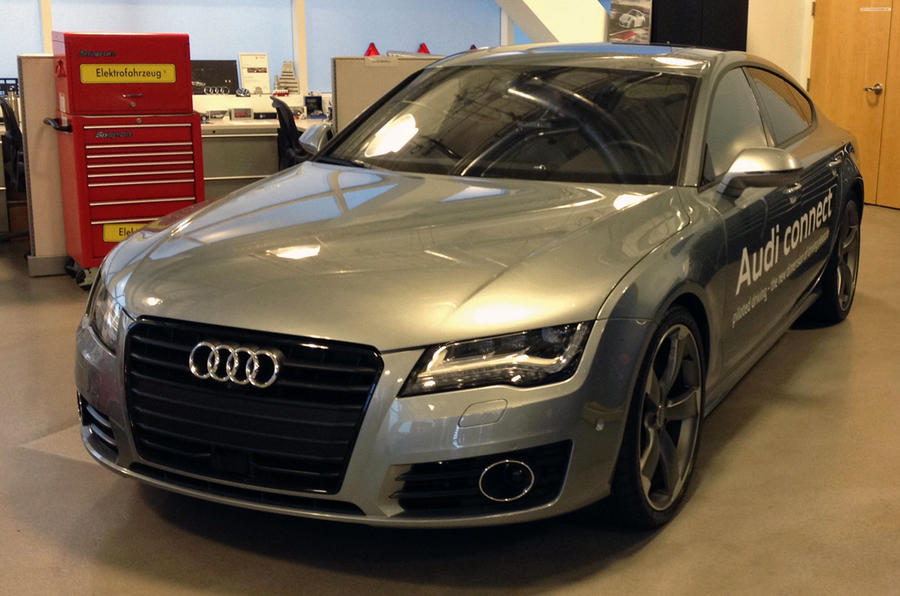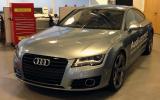Volkswagen Group cars with the ability to self-drive and self-park will be on the market within five years, according to engineers at VW’s Electric Research Laboratory (ERL) in Silicon Valley.
The ERL is tasked with being inspired by integrating the latest electronic innovation to emerge from Silicon Valley, home to the likes of Apple, Google and Facebook, into VW Group products, making sure it is up with and ahead of trends.
The autonomous technology is a large part of its development, but many other projects are ongoing, including cars that learn their environment, bespoke smartphone apps, and innovative new safety and security features, some of which are detailed below.
Traffic Jam Pilot – a first step to autonomous driving
The Traffic Jam Pilot system has been previewed in an Audi A7 concept car and is tipped to go into production in the next-gen Audi A8 in 2016. Traffic Jam Pilot takes complete control of the car at speeds of up to 40mph in traffic.
VW has so-far undertaken tens of thousands of miles of testing autonomous technology – or piloted as VW now calls it, in reference to an auto-pilot system on aircraft – on US roads.
Autonomous technology is made up of laser sensors, laser scanners, stereo cameras and ultrasonic cameras, largely existing technology adapted for new functions. The ERL’s head of driver assistance systems Jörg Schlinkheider said the technology VW is developing is scalable, with the view of fitting it to everything from an entry-level VW Golf to a range-topping Audi A8.
Beyond the sensors and cameras, Schlinkheider said it was necessary for the car to have HD maps that can tell the car what’s around the corner if it can’t see and adapt according, and also complex algorithms for dealing with the control inputs and scenarios such as overtaking. All this info will feed into a ‘decider’ system, an ECU the size of an iPad.
Autonomous parking
An autonomous parking function is also likely to appear around 2016, the tech allowing the driver to get out of the car and park their car using their smartphone once a suitable space has been found. It can even squeeze into tight spaces with a tolerance of just 20cm each side. VW says the smartphone operation is important as it allows the manoeuvre to be instantly aborted if danger is detected.
Steering-wheel mounted touchpads
At an early stage of development, these touchpads are mounted on either side of the steering wheel and are designed to allow the driver to input commands using their thumbs. Much of the research centres on the global potential; while input is simple enough with an English or Western European alphabet, it becomes much trickier with scripts commonplace elsewhere in the world.










Add your comment
Useless giimicks
Why Buy
The next step should be urban pods connecting with intercity tracks.
future junk